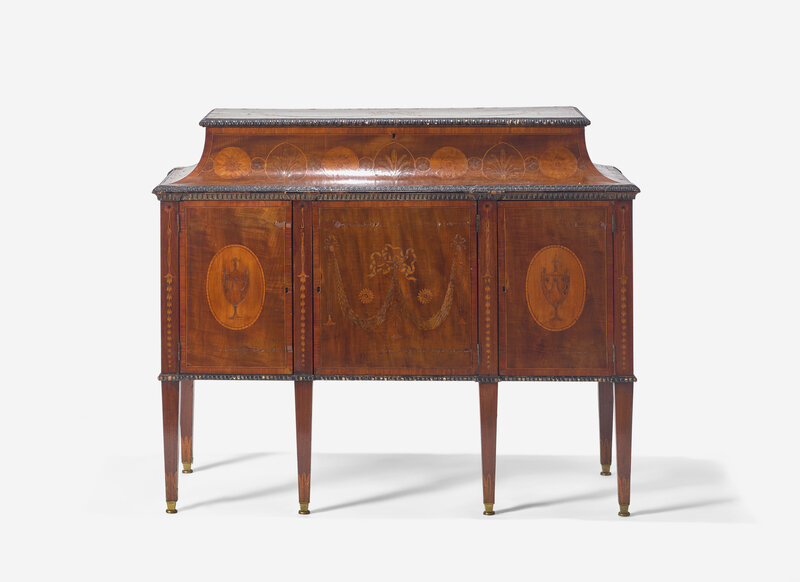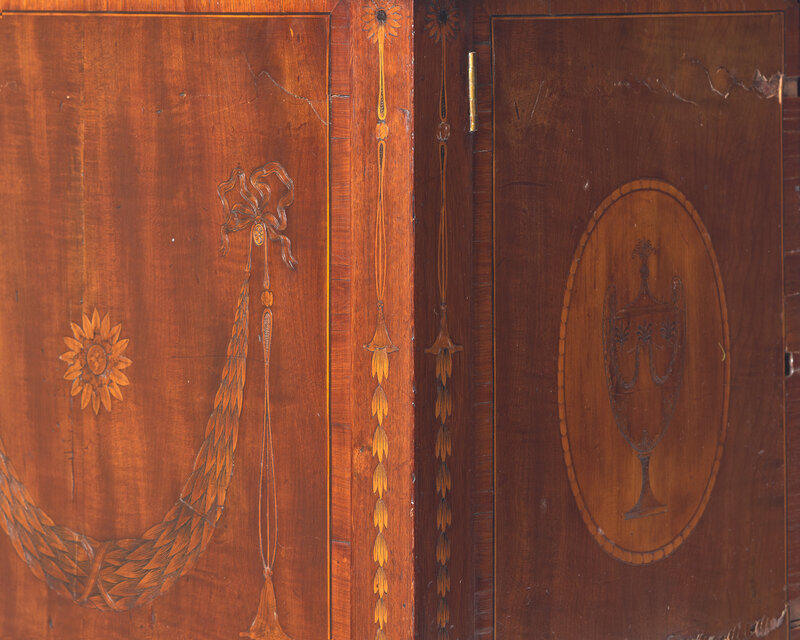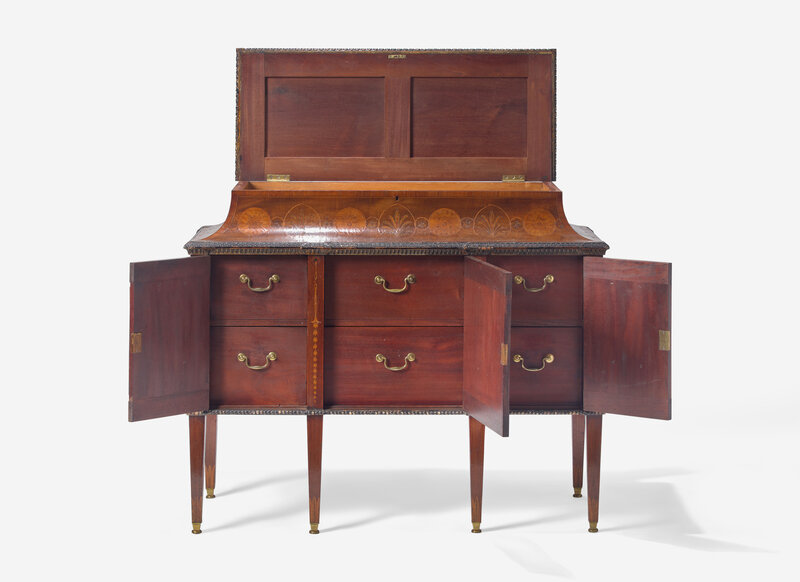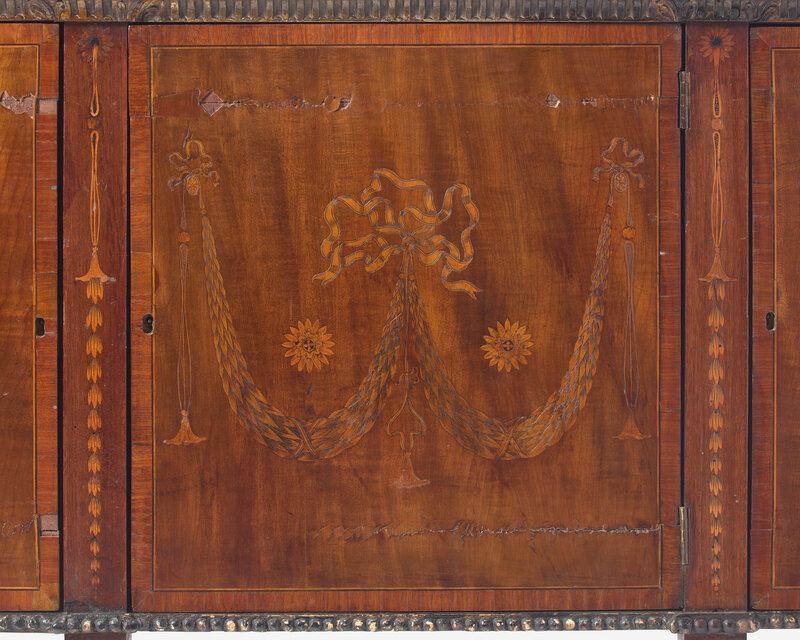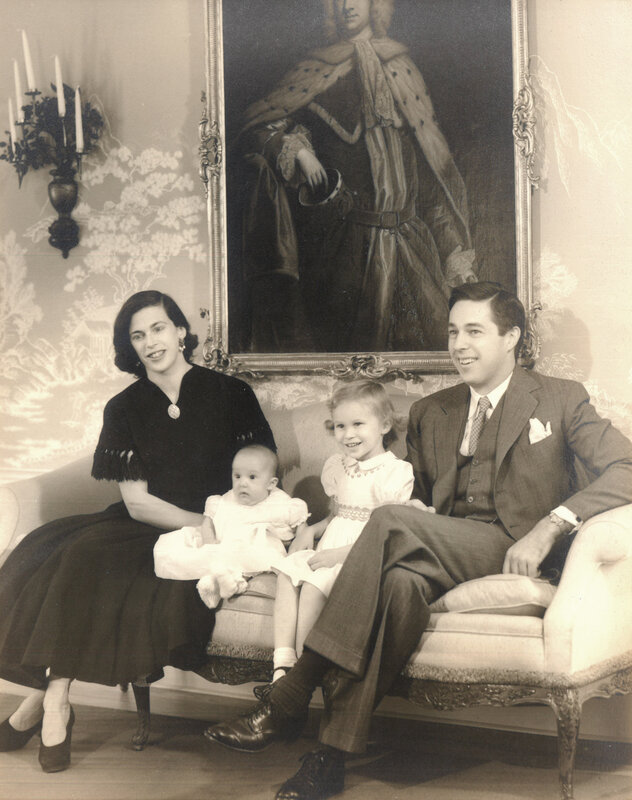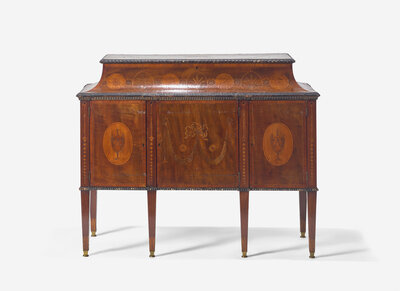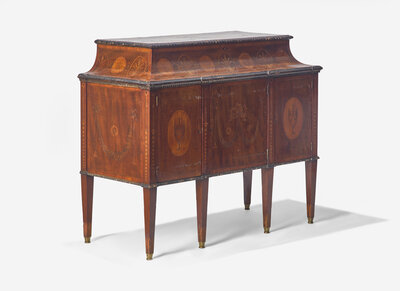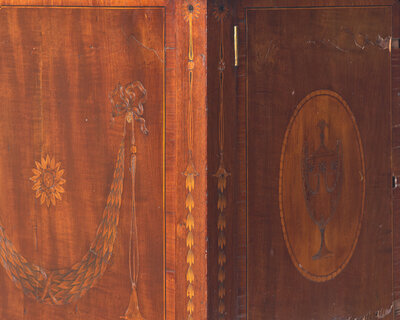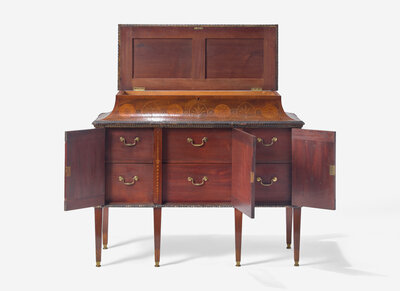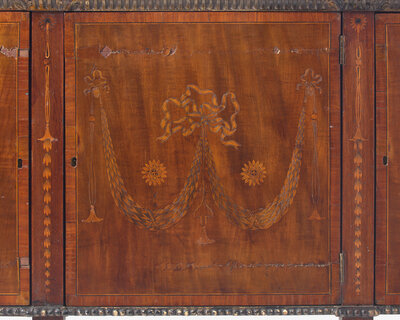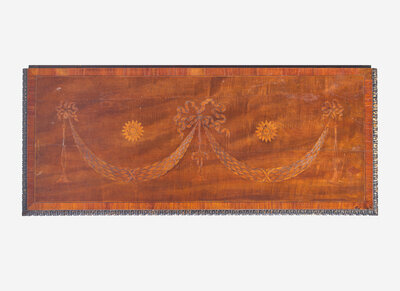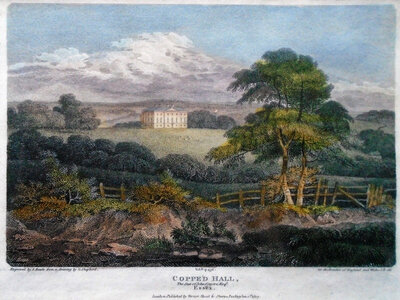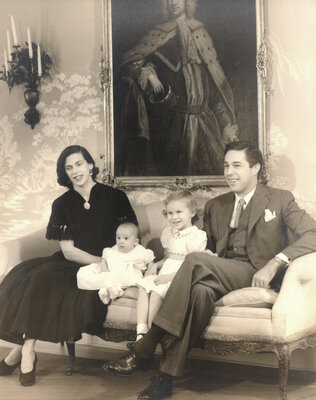An Important George III Harewood and Marquetry Commode
Sale 2109 - Property from the Aline Elwes McDonnell Trust
Jun 21, 2024
10:00AM ET
Live / Philadelphia
Own a similar item?
Estimate
$10,000 -
20,000
Lot Description
An Important George III Harewood and Marquetry Commode
Circa 1775
of sarcophagus form with hinged lid with a band of anthemion and rosettes in the concave section below, above three cabinet doors enclosing six short drawers, on square tapering legs with brass caps.
Height 35 x width 43 1/4 x depth 18 3/4 inches.
Height 35 x width 43 1/4 x depth 18 3/4 inches.
Provenance:
Aline Thorold (1869-1951) m. Ernest James Wythes (1868-1949) at Copped Hall, Essex, until 1917 and The Wood House, Essex, thereafter and by descent to
Barbara Dorothy Wythes (1896-1984) m. (Francis) Guy Robert Elwes (1895-1966) at The Wood House, Essex until 1961 and Ham Spray House, Marlborough, thereafter and by descent to
Aline Mary Margaret (Elwes) McDonnell (1923-2023) m. Hubert McDonnell Jr. (1919-2004), Greenwich, Connecticut, and thence by descent
Note:
The present commode, with its hinged concave upper section, relates closely to an example illustrated on the cover and discussed in Clifford Musgrave’s 1966 book entitled Adam and Hepplewhite and other Neoclassical Furniture and attributed to Thomas Chippendale (1718-1779), circa 1775 (p. 179). Musgrave links the present form and the concave upper section to music cabinets provided by William Vile for King George III in 1763 and a commode of similar form with a flat top in the gallery at Syon House, Wiltshire. Whilst the intricate marquetry throughout may also suggest the work of esteemed London cabinetmakers, Mayhew & Ince, the direct correlation between aspects of the ornament (including the inlaid linked rosettes to the upper section) which relate to a pair of side tables supplied to Mersham-le-Hatch by Thomas Chippendale for Harewood House, and whose bills survive, might allow an attribution to Chippendale here. The marquetry work also relates to the character of a dressing commode supplied in 1773 and detailed in the Harewood accounts. A similar anthemion motif is deployed on a bonheur-du-jour at Stourhead, Wiltshire, believed to have been supplied by Chippendale the Younger (ibid, illus. fig. 164).
It has been suggested that the present (and somewhat unusual) form of the hinged upper section was an innovative design for additional Dining Room storage with the lower section, with marquetry doors concealing an arrangement of drawers for table articles and flatware, and the upper cedar-lined section devised for the storage of table linens. Little is known of the work to aggrandize Copped Hall, Essex, by the architect James Wyatt, conducted in the 1770s under the direction of John Conyers (1748-1818), but the tantalizing possibility of a heretofore unknown Chippendale or Mayhew & Ince commission under the direction of Wyatt is embodied in this curious and rare survival from the devastating fire at Copped Hall in 1917. The example illustrated in Musgrave’s book, supplied at the time by the great dealer, Hotspur, shows gilded decoration to the upper moulded edge. The present commode’s ‘ebonising’ does, indeed show some signs of an earlier gilded scheme extant to the undersides of the leaf ornament at the angles, aligning the examples yet more closely.
Pictured:
An 1807 engraving of Copped Hall, S. Rawle from a drawing by S. Shepherd.
Aline Elwes McDonnell and Family, circa 1954.
Condition Report
Auction Specialist
